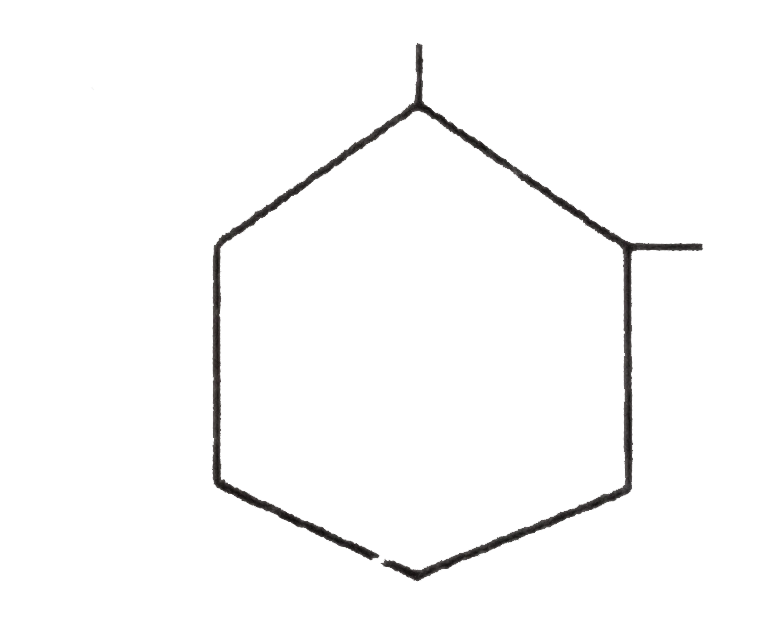(a) A tetratomic molecule (A) on reaction with nitrogen (I) oxide, produces two substances (B) and (C) is a dehydrating agent while substance (C) is a diatomic gas which shows almost inert behaviour. Identify (A),(B) and (C).
(b) Why red phosphorous is denser and chemically less reactive than while phosphorous ?
( c) Why nitrous oxide supports combustion better than air ?
(a)(A)Tetraatomic molecule+N2O→(B)Dehydrating agent+(C)Inert gasP4(A)+10N2O→P4O10(B)+10N2(C)
(A) is tetratomic molecule, which on reaction with nitrogen (I) oxide, N2O gives (B), i.e., P4O10 which acts as a dehydrating agent, while (C) is N2, a diatomic gas which is inert.
(b) Red phosphorous is regarded as a polymer consisting of chains of P4 tetrahedra linked together. Hence red phosphorous is denser and less reactive than white phosphorous.
( c) Air has ~22%O2 in it, while N2O on decomposition produces ~33% of O2 by volume.
2N2O2vol.→2N22vol.+O21vol.
O2=Total vol ofN2andO23≈33%
Since % of O2 produced by decomposition of N2O is more, it acts as a better supporter of combustion.
Topper's Solved these Questions
- P-BLOCK GROUP 15 ELEMENTS - THE NITROGEN FAMILYBOOK - CENGAGE CHEMISTRYCHAPTER - P-BLOCK GROUP 15 ELEMENTS - THE NITROGEN FAMILYEXERCISE - Solved Example
7 Videos
- P-BLOCK GROUP 15 ELEMENTS - THE NITROGEN FAMILYBOOK - CENGAGE CHEMISTRYCHAPTER - P-BLOCK GROUP 15 ELEMENTS - THE NITROGEN FAMILYEXERCISE - Concept Application Exercises 2.1 (Subjective)
22 Videos
- ORGANIC COMPOUNDS WITH FUNCTIONAL GROUPBOOK - CENGAGE CHEMISTRYCHAPTER - ORGANIC COMPOUNDS WITH FUNCTIONAL GROUPEXERCISE - Archives Analytical And Descriptive
24 Videos
- P-BLOCK GROUP 16 ELEMENTS - THE OXYGEN FAMILYBOOK - CENGAGE CHEMISTRYCHAPTER - P-BLOCK GROUP 16 ELEMENTS - THE OXYGEN FAMILYEXERCISE - Archives Subjective
10 Videos
Similar Questions
Compound (A) and (B) are isomers having C8H10. On oxidation (A) gives benzoic acid while (B) gives phthalic acid which forms an anhydride (C) on heating. Identify (A), (B) and (C).
View SolutionTwo properties of four substances A, B, C and D are given in the table.

Which of these substances in most likely a metal and why ?
View Solution
Knowledge Check
A tetra-atomic molecule (A) on reaction with nitrogen (I) oxide, produces two substances (B) and (C). (B) is a dehydrating agent while substance (C) is a diatomic gas which shows almost inert behaviour. The substances (A),(B) and (C) are
AP4,P4O10,N2BP4,N2O5,N2CP4P2O3,ArDP4,P2O3,O2A tetra-atomic molecule X on reaction with nitrogen oxide (Oxidation State = 1) produces two substances Y and Z. Y is a dehydrating agent while compound Z is a diatomic gas which shows almost inert gas behavior. The substances X, Y and Z are
AP4,N2O5,O2BP4,P4O10,ArCP4,P2O3,O2DP4,P4O10,N2Two substances A and B combine together to produce a new substance C. The properties of C do not tally with those of A and B. A and B cannot be separted into simpler substance by any chemical means . Which of the following statements is ( are ) correct about the formation of C?
AA and B are elements.BA and B are compounds.CC is a mixture of A and B.DA and B are present in C in a fixed ratio by mass.
Two moles of organic compound 'A' on treatment with a strong base gives two compound 'B' and 'C'. Compound 'B' on dehydrogenation with Cu gives 'A' while acidification of 'C' yields carboxylic acid 'D' with molecular formula of CH2O2 . Identify the compounds A, B, C and D and write all chemical reactions involved.
View Solution(a) On bolining a mineral (A) with Na2CO3 solution, a white precipirtate (B) is formed.
(b) The precipitate is fitered and the filtrate contains two conpounds (C) and (D). The componds (C) is removed by crystallisation and when CO2 is passed through the mother liquor left, (D) changes to (C).
( c) On strongly heating (C), two compounds (D) and (E) are formed.
(d) (E) on heating with cobalt oxide provides blue-coloured substance (F).
Identify (A) to (F) and give chemical reaction for (a) to (d).
View Solution(a) Two moles of organic compounds 'A' on treatment with a strong base gives two compounds 'B' and 'C'. Compound 'B' on dehydrogention with Cu gives 'A' while acidification of 'C' yields carboxylic and 'D' with molecular formula of CH2O2. Identify the compound A, B, C, and D and write all chemical reactions involved.
(b) (i) o-nitrophenol has lower b.p. than p-nitrophenol. Explain.
(ii) Write IUPAC name of the following :

View SolutionAn inorganic salt (A) is decomposed at about 523 K to give products (B) and (C).Compounds (C) is a liquid at room temperature and is neutral to limus paper while oxide (B) on burning with white phosphorous given a dehydrating agent (D). Compounds (A),(B),(C) and (D) will be identified as
View SolutionA white 'A' on heating decomposes to produce two products 'B' and 'C'. 'B' on reaction with white phosphorous produces 'D', which is a strong dehydrating agent. 'D' on reaction with perchloric acid converts it to its anhydride.
The compound 'A' is:
View Solution
